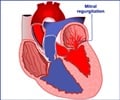Signs and Symptoms
Symptoms set in rapidly and this is followed usually by infective clots or emboli getting dislodged from the heart to various regions of the body with disastrous resulting in shock and organ damage.
Acute bacterial endocarditis is usually of a sudden onset with a high fever, fast heart rate, fatigue, and rapid and extensive heart valve damage. Fever is usually of high grade (102° to 104°F [38.9° to 40°C])
Fatigue, mild fever (99° to 101° F [37.2° to 38.3°C]), a moderately fast heart rate, weight loss, sweating, and a low red blood cell count (anemia) occur in subacute bacterial endocarditis.
Accumulations of bacteria and blood clots on the valves (called vegetations) may break loose, i.e. form emboli and travel to various parts of the body through blood. Blockage of arteries can occur. Consequences may be disastrous. Stroke can occur if an artery in the brain gets blocked; heart attack ensues if the block occurs in any of the arteries to the heart. Blockage can also lead to stomach pain, blood in the urine, or pain or numbness in an arm or a leg.
Collections of pus (abscesses) may develop at places where emboli settle (for example the base of infected heart valves).
Perforation and leakage of the heart valves can occur. Backflow of blood through a defective heart valve is called as regurgitation. People may run into shock. The condition called septic shock results in wide organ damage. Organs like kidney may stop to function.
Infected arteries get weakened walls and may rupture.
Other symptoms include:
- Chills
- Joint pain
- Paleness (pallor)
- Painful nodules under the skin
- Confusion
Physical examination may revealfindings like neurological abnormalities, enlarged spleen, and anemia.
Auscultation with a stethoscope reveals murmurs.
Osler’s nodes (small, painful nodules) are found in 10-25% of the cases, most commonly on the palmar surfaces of the fingers and toes. Less than 10 % of the cases have Janeway lesions primarily on the palms and soles. These are painless patches on the skin.
Endocarditis of an artificial heart valve may spread to the heart muscle at the base of the valve and can loosen the valve. It may also affect the electrical conducting system of the heart and slow down heartbeat. Sudden loss of consciousness or even death may ensue.






